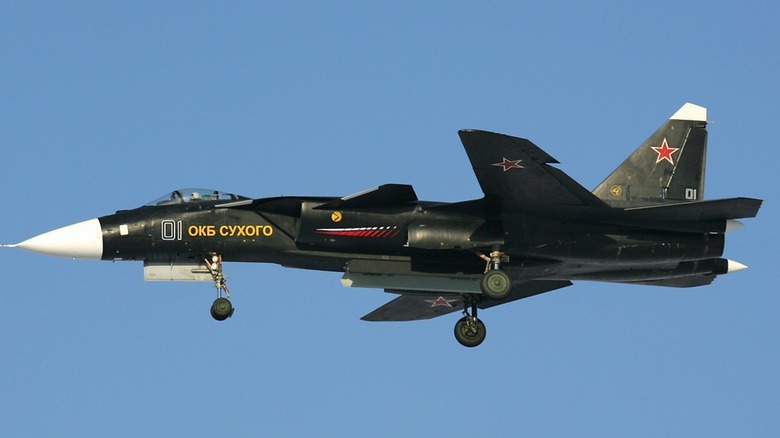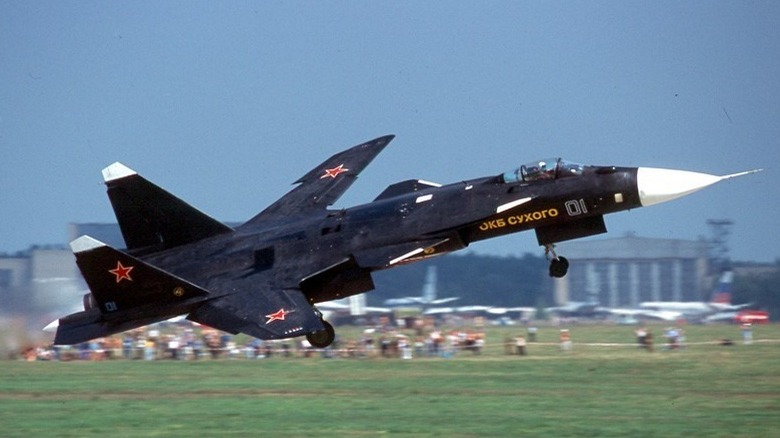Su-47: The Coolest Fighter Jet Russia Didn't Build
In the early-1980s, the Soviet Union commissioned one of the most ambitious fighter jet designs ever. Initially known as the Su-37 Berkut, which translates to "Golden Eagle," the aircraft would later be designated the Su-47. The Su-47 was one of only a small handful of jets ever constructed with forward-swept wings, another prominent example being the X-29 from American manufacturer Grumman, which was tested by NASA and the U.S. Air Force.
The unique forward swept wing design was worth investing in because of multiple perceived benefits including increased low-speed maneuverability and shorter takeoff distances, useful if deployed from an aircraft carrier. In particular, direction changes during high angles of attack or extremely low-altitude flying could be executed with confidence and stability.
Since development coincided with the fall of the Soviet Union and its economy, financial support for the project by the Russian government was largely withdrawn in favor of more practical expenditures. As such, the pace of progress was slow but finally in September 1997, the first test flight was undertaken. During trials, the Su-47 demonstrated a maximum cruising speed of 1,800 kilometers per hour — not overly impressive for a twin-engine fighter jet, but high terminal velocities clearly were never the Su-47's intended purpose.
[Featured image by Dmitry Pichugin via Wikimedia Commons | Cropped and scaled | GFDL 1.2]
Some technology was adapted to other jets
Successful on some counts, the radical design wasn't without its drawbacks. The precise control at low speeds had the exact opposite effect at high speeds. Additionally, the extreme amount of energy required to propel the forward-swept wings not only required large quantities of fuel and power, but it subjected the wing assembly to tremendous stress and potentially dangerous flexing.
Although at least one working prototype was completed and test flown, the Su-47 ultimately wasn't adopted as a standalone fighter jet. Several aspects of the forward-swept prototype made the jump to production jets such as the Su-35 and Su-37, including fly-by-wire technology and lightweight composite materials. In 2019, following a 12-year absence from the public eye, an Su-47 prototype was towed across the tarmac from storage to static display at an air show just outside Moscow, to the delight of spectators.
[Featured image by Leonid Faerberg via Wikimedia Commons | Cropped and scaled | GFDL 1.2]

